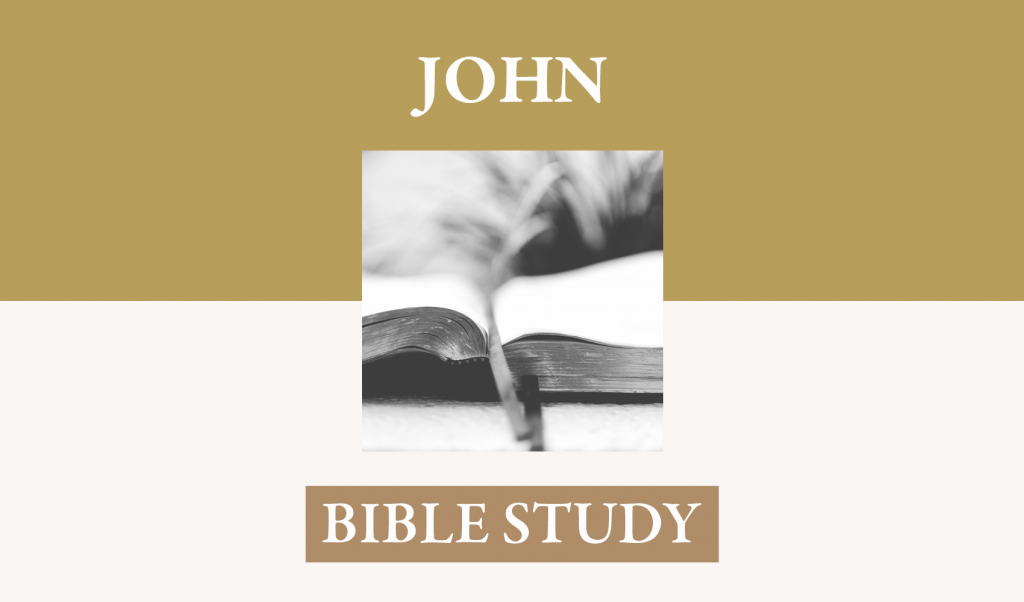John 11
I. The Purpose of Lazarus’s Death (1-16)
A. Setting – John described Lazarus as “a certain man” indicating that he was known to Jesus beforehand; he already was identified with Jesus’ life. A visit to this home is recorded in Luke 10:38-42 though only Mary and Martha are mentioned in that short narrative. This is the first time Lazarus is mentioned. Bethany is just two miles from Jerusalem and thus in a danger zone for Jesus. Enemies were near and were plotting. Later we learn more of the intensity of the faith of Mary in her anointing of Jesus’ feet (12:1-3). A similar event by a different woman in a different place is recorded in Luke 7:36-50. The depth of friendship is indicated by the description Mary and Martha give of Lazarus: “The one whom you love” (3).
B. In verses 4 and 6 we are informed of Jesus’ statement of purpose in this sickness and his consequent intentional delay. Notice the congruency between “the glory of God” and “that the Son of God may be glorified by it” (4). The glorification of the Son of God in his incarnation and ultimately his redemptive work is the chief means through which God, in the eternal covenant, has determined to show the beauties of his character throughout eternity. This death of Lazarus was a part of that eternal plan. This is the seventh and the most powerful sign that Jesus gives of his messianic status of God and man in one person. It shows that he is equipped to handle even death when he puts himself in the neighborhood of those who are determined to kill him.
C. Jesus loved Martha” etc. (5) – There is the two-fold love that we see in this statement; his eternal love that was set upon them as his elect, but also that love that grows through common human interests, sympathy, soul-kindredship. Jesus was comfortable in their presence, and he knew that they understood who he was. Mary was exuberant in her expressions of genuine, humble, gratitude and love for Christ both in his temporal estate and for his eternal glory.
D. At the right time, Jesus proposed that they should go to Judea, to Bethany.
1. “Don’t go, it’s too dangerous” (8). – The disciples wanted him to avoid any confrontation that might lead to his arrest and death. Jesus knew the design of this event and emphasized its connection to his demonstration that he was the light of the world.
2. Jesus pointed to the necessity of seizing the opportune time for righteousness (9, 10). Jesus himself avoided several attempts on the part of his enemies to capture him, so he was not foolhardy. But he also had a clear perception of when his time would come, what he must do until that time came, and he knew each of the steps that must be taken in order to bring to full ripeness the time. The occasion soon would come when it no longer would be said, “His time had not yet come.”
E. Jesus emphasizes the temporary nature of Lazarus’s death – the metaphor of sleep is used other times in Scripture for death. This is to emphasize that the death of everyone is a mere temporary setting aside of the body until it is rejoined with the rational soul at the resurrection. (1 Thessalonians 4:13-18; 1 Corinthians 15:51-55; Mark 5:39-42). We exist and thrive in our fullest potential when body and soul are together. The resurrection will bring the saints to their potential of praise and of enjoyment of the glory of God and will assure that the reprobate experience the fullness of just wrath in their whole persons.
F. Though Lazarus had been sick when the sisters contacted Jesus, Jesus now states the literal situation avoiding the metaphor of sleep: “Lazarus is dead.” (14). “I am glad,” seems a strange response to the death of Lazarus, especially in light of the subsequent tears (35), but Jesus again points to an infinitely more important issue, the nature of his person and purpose. “So that you may believe” (15). They already believed, but faith can be expanded in intensity and quantity, though its quality always is the same.
II. Jesus inserts the truth of hope into the situation of mourning (17-37).
A. The situation upon arrival – It is clear that Lazarus is dead; mourners are present, the sisters overflowed with confused grief, and Lazarus is in a grave.
B. Mary and Martha receive a gracious lesson in faith.
1. Disappointment (21, 32) – “Lord, if you had been here, my brother would not have died.” Both Martha and Mary express the same belief. On this occasion, however, Martha goes on to express a more profound confidence in the power and compassion of Jesus. Note the profound use of the pronouns “I,” “You,” “You.” “Even now I know that whatever You ask of God, God will give You” (22).
2. Martha gave a profound affirmation of present faith built on truth (22-24). She had been taught, opposed to the view of the Sadducees but consistent with that of the Pharisees, that there would be a resurrection on the day of judgment. Note how Paul used this in Acts 23:6. Martha’s response was not an expression of pessimism about the present, for she already had indicated that she knew Jesus could do whatever he willed. She was not sure of what his will was in this situation. His will, however, was to show that even in this extreme case, where corruption already had set in, he had final authority.
3. Jesus expands Martha’s understanding (25-27) Compare verse 39, 40 for more of Martha’s perplexity about this.
-
-
- Jesus affirms that resurrection to life is a matter bound up entirely with his person and work (25, 26 and previously 8:51; 6:39, 40; 5:21, 24-29).
- This brings forth a strong, correct, and earnest confession from Martha (27). What were the elements of her confession?
-
-
-
- Her friend Jesus is indeed the Christ, the one anointed of God to carry out the redemption of his people.
- He is the Son of God. Of necessity the one to whom all the redeemed would be indebted throughout eternity must be God; and, though he must be man to be a mediator, he must be God to give sufficient excellence to the sacrifice to make real atonement for the people and to put an end to all other sacrifices.
- She confessed his pre-existence and coming into the world with a purpose. In this she reiterated her belief in his messiahship for the Messiah was truly the “Coming One.”
-
4. Mary’s worshipful assertion 28-32 – Jesus called for Mary, knowing that her mentality of learning and worship needed specific instruction concerning the true radicality of what had happened and what would happen. What significance, if any, is there in the different postures taken consistently by Mary and Martha? Martha came to him even before he reached the village (20, 30). Apparently, she stood as she engaged Jesus about the death of Lazarus and Jesus’ delay in coming. Having a more assertive personality, did she think that Jesus owed her an explanation? Mary fell at his feet (32). Martha, on the other hand, went further in her affirmation of faith in Jesus’ power and gave a clear statement of the infinite dignity of his person.
C. Jesus is troubled in Spirit (33-37).
1. Was this the result of sympathetic compassion for the sorrow of his friends? That the passage begins with a statement of the love that Jesus had for this family could certainly include his sympathetic human heart and a mourning with them over the loss of their brother. This in no sense diminishes Jesus’ omnipotence or perfect knowledge of what was about to transpire but clearly points to the true humanity of this person and his sympathetic love for them.
2. Did he contemplate the grave, death and its origin in sin and have a fresh and intense realization of what he must suffer in order to be the resurrection and the life? Cf. 12:27 and 13:21 [same word for troubled and relates to the intense realization of something concerning his own death; cf. Heb 5:7-9]. Remember all of which Jesus was aware that might have pressed with intensity into his consciousness. Adam’s sin had brought forth death and condemnation. Disobedience to the command of the self-existent all-wise sovereign over creation made sin a matter of infinite guilt. That meant that he alone as the last Adam, the Son of Man and the Son of God could provide a sufficient and perfectly fitting altar of sacrifice for guilt in the satisfying of just wrath. He knew that his soon-to-come enduring of divine wrath would involve the removal of all the Father’s mercy, grace, support, and favor from him. All this would flood into his soul at this time, standing before a tomb committing himself to the conquering of death, removing the wages of sin. This moment surely cnstituted one of those points in which “although he was a Son, he learned obedience through the things that he suffered.”
3. Spurgeon points out in a sermon on John 11 that the question of verse 37 to the eyes of faith should have been a positive affirmation: “He has opened the eyes of the blind, and he also can raise the dead.”
III. The Raising of Lazarus 38-44
A. Note in verse 38 Jesus’ emotions continued to affect him deeply in the presence of death. He himself would be entombed in a cave with a stone over its opening. Does he see in this moment his exertion of power for his own resurrection (John 10:17, 18)? Does he contemplate his words at the time of general resurrection and judgment (John 5:24-30)? “Move the stone” – So Lazarus could walk out; at Jesus’ resurrection, the stone was removed that the disciples might go in.
B. Manifesting the Glory of God (40).
1. The reality and certain finality of Lazarus’s death is affirmed. At Jesus’ death, the soldiers gave irrefutable proof of his death. For Lazarus, corruption already had set in. For Jesus, the Scripture words would apply to him during his sojourn in the tomb, “Nor will you allow your holy One to see corruption” (Acts 2:27; Psalm 16:9, 10).
2. Jesus, for the sake of those around, expressed certainty that the Father has heard him (41, 42; 9:31).
3. While this is another, and virtually irrefutable, evidence that he is sent of God, the Jewish leaders are provoked, not to belief, but to seek to kill him (see 7:44; 8:59; John 15:18-25;16:5, 27-28).
C. Calling Lazarus Forth
1. Was the name “Lazarus” specified to forestall a general resurrection (5:28)? Or as evidence that Jesus knew precisely what he was about?
2. He walked out still in his grave clothes and had to be loosed by those outside the tomb. In Mark 5, at the raising of the little girl, he instructed those caring for her to give her something to eat.
3. These hints of life as normal, the need for help, and the existence of normal limitations on those that have been raised, show that this and other raisings did not involve all the glory of the resurrection, having glorified bodies, etc. but that these were resuscitations.
IV. The Radical Response of Unbelief 45-57
A. Some Believe (45). We have seen this before (6:69; 8:30 – Just before Jesus gave a discourse on the implications of true belief; 9:38 10:42 ; for the power that initiates true belief see 1 Cor. 1:24).
B. Others report this to Jewish leaders in accordance with the Jewish policy toward Jesus (57).
C. The Jews develop a serious strategy (47b-53, 57) – They became seriously committed to stopping Jesus. They did not want his ability to create excitement to give the impression of revolution and bring Rome upon them with the possibility of a radically rearranged relationship of Jews to Romans. At present, they had the upper hand and felt that Jesus was a threat to them and their position of favoritism and power. Every miracle that he did merely made the possibility of his leading a rebellion greater, for it gave more hope and more boldness to the common people. Their interpretations of his work concerned only their own position of prestige and its threat toward them. He stated in 10:38 what should have been the proper response, but they were blinded by their irrational quest for superiority.
D. Verse 52 – The high priest gave an unintended prophecy. He prophesied that Jesus’ death would come to him in the stead of others. How does it fit the argument of John’s Gospel? Who are the children of God scattered abroad? These are the sheep referred to in John 10, even those “that are not of this fold” that Jesus will bring also. The gospel of John makes it extremely difficult to deny that Jesus had in mind the salvation of a definite number of persons given him by the Father and scattered among all nations and throughout all ages (John 6:38, 39, 44).
V. Jesus no longer walks among them. Instead, he takes his disciples aside to instruct them.
He waits until the decreed time to return to the most recent place of a miraculous sign—his challenge to death itself. Then he would culminate his ministry by manifesting his glory—in the humble triumphal entry, in his submission to suffering and death, and in the final manifestation that death no longer has a sting. Soon his time would come, and the cup the Father had given him to drink, he would drink.
VI. Points for contemplation
A. Christological – Jesus begins to put into action claims that he earlier had made and provokes confessions concerning his person.
B. Faith – Faith must have both content and opportunity for commitment – Faith sees the glory of God in the person and work of Christ; Jesus causes our faith to grow by creating a radical option in which we will choose either the world or Christ.
C. Unbelief – The intensity if the evidence for belief reveals at least these truths. Sin lies most profoundly in the heart and the understanding will not respond apart from a sovereign and effectual alteration of the affections. This means that the increasing clarity of evidence and “many infallible proofs” uncovers increasingly radical hatred at the bottom of unbelief (See 9:41; Luke 10:14; 16:31; Titus 3:3; 1 Timothy 1:15, 16). It reveals in a commensurate way the depths of wrath that the Lord must endure in payment for sin (Romans 5:18, 19; Galatians 2:20; 3:13; Hebrews 10:10; 1 Peter 1:18-21)




















